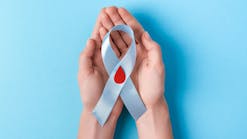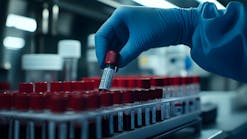CONTINUING EDUCATION
To earn CEUs, visit mlo-online.com and see this month's test by clicking the CE menu item.
LEARNING OBJECTIVES
Upon completion of this article, the reader will be able to:
- Discuss genetics, causes and molecular mechanism, mortality rate, and therapeutic regimens related to cancer.
- Explain next generation sequencing (NGS) technologies with their various applications and advantages.
- List and explain various challenges for implementation of NGS in the clinical lab.
- Discuss cytokines to include their role in the body, implication of cytokines in various disorders, and use of cytokine-related therapies.
- Explain measurement of cytokines, including the various techniques for cytokine measurement, the advantage or disadvantage of each technique, and factors affecting cytokine measurement.
Cancer, accounting for one in eight deaths worldwide, is a complex disease typically caused by a combination of genetic, environmental, and lifestyle factors. To date, more than 350 human cancer-associated genes have been identified, and this number is expected to continue to rise.1 In general, the cancer genome is comprised of the patient's germ line DNA, upon which somatic genomic alterations have been superimposed. Somatic mutations identified by sequencing can be classified either as “driver” or “passenger” mutations. So-called driver mutations are those that directly contribute to tumor progression by conferring a growth or survival advantage to the cell. Passenger mutations encompass neutral somatic mutations that have been acquired during errors in cell division, DNA replication, and repair; these mutations may be acquired while the cell is phenotypically normal, or following evidence of a neoplastic change.1
Historically, attempts have been made to elucidate the molecular mechanism of cancer, and several “driver” mutations, or biomarkers, such as HER2/neu2, have been identified. Based on such genes, therapeutic regimens have been developed to specifically target tumors with known genetic alterations. The most well defined example of this approach is the targeting of HER2/neu in breast cancer cells by trastuzumab (Herceptin).2 Cancers, however, are not simple monogenetic diseases, but are instead characterized by combinations of genetic alterations that can differ among individuals.3 Consequently, these additional perturbations to the genome may render some drug regimens ineffective for certain individuals.2 In spite of this knowledge, the traditional approach to treating cancer patients has been the use of first-line therapies proven to be the most effective in a population. In these cases, patients suffer from the side effects of treatment without the trade-off of a noticeable curative benefit.3 Patients failing to respond to the first-line therapy are then given the next most effective treatment (provided that an alternative exists).3
Molecular characterization of tumors prior to therapy selection has greatly improved the personalized treatment of individual patients.
Molecular characterization of tumors prior to therapy selection has greatly improved the personalized treatment of individual patients. These clinical services typically include Sanger sequencing of a limited number of genes known to harbor mutations with well-described clinical phenotypes.4 When several genes are queried for sequencing, however, this approach can be both time and resource intensive,4 and often cost-prohibitive. The advent of Next Generation Sequencing (NGS) technologies has the potential to overcome such limitations by enabling laboratories to cost-effectively and simultaneously sequence complete genomes of individuals, and promises to usher in a new era of personalized medicine.4,5
NGS technologies have resulted in mapping of the human genome in many individuals, providing the blueprint to understanding how genetic changes lead to disease.6 To date, contributions of NGS technologies to genomics research and gene discovery have been far-reaching.7 Interpretation of the tremendous output of data from these technologies, however, is just one reason for the limited application of such technologies in the clinical laboratory.7
NGS technology
NGS is capable of producing thousands to millions of sequences at once, compared to the 96 processed by the conventional capillary-based Sanger method.8 There are currently three main providers of second-generation sequencing platforms on the market: the 454 Genome Sequencer from Roche, the HiSeq 2000 from Illumina, and the Applied Biosystems SOLiD system.9,10 The basic steps across all NGS platforms are similar and have been extensively reviewed elsewhere.3,5,7-9,11-13 Briefly, all begin with template preparation by shearing DNA (or cDNA) to create fragment libraries. Adaptor sequences are then added to these fragments and serve as primers for amplification, typically by emulsion PCR (emPCR) or bridge PCR. The amplified signal (“beads” for the 454 Genome Sequencer or SOLiD, and “clusters” for the Genome Analyzer) is then analyzed using a variety of chemistries depending on the platform, but all are based on the addition of labeled nucleotides. Digital images are then captured and analyzed to determine the sequence of the target DNA.2
NGS and cancer
- NGS identification of somatic mutations. The somatic alterations of cancer genomes identified by NGS constitute the “genetic fingerprint” of the cancer and determine how each cancer occurs and behaves. As a consequence of the accumulation of these pathological changes to the genome, normal cellular networks and pathways are disrupted, allowing cells to escape normal regulatory control mechanisms and to proliferate, invade, and spread uncontrollably throughout the body. These genetic changes underlying cancer range from a single nucleotide change, to structural chromosomal changes (insertions, deletions, rearrangements), to variations in copy number. Only a small number of these acquired changes, however, are clinically significant. Prior to the development of NGS, each mutation would require development of a method targeted for that specific genomic alteration. Today, however, a single NGS assay can detect the full complement of genomic alterations with high sensitivity and increasing specificity.
- NGS coverage. Some genomic alterations are present at very low levels in clinical samples isolated from cancer patients. Traditional Sanger sequencing relies on relative peak heights when determining nucleotide base calls. Thus, a mutation occurring at low frequency will have a low signal-to-noise ratio, making it indistinguishable from the background signal. Given that cancer is a heterogeneous disease, many clinically relevant mutations will only be present in a fraction of the cells. NGS employs high base coverage, resulting in a higher sensitivity of minor alleles or mutations appearing in tumor cells.14
- NGS and cancer management. There are three main advantages proposed for using NGS in the management of cancer. First, data generated from the complete molecular profiling of the cancer genome can be used for the accurate molecular diagnosis and classification of cancer types. Such data can also be exploited to predict individual prognosis and likely treatment response, which is currently based on probabilistic measures derived from the general population. Finally, it is believed that NGS provides a faster, less invasive but more clinically useful tool for diagnostics, treatment monitoring, and personalized detection of recurrence.
Challenges for implementing NGS in the clinical lab
Certainly one of the challenges is cost.The sequencing of the first human genome using Sanger technology took approximately 13 years and $2.7 billion to complete.13 In comparison, 2008 saw the complete sequencing of a human genome with NGS technologies in five months, for approximately $1.5 million.15 As of 2010, the cost of sequencing the human genome was estimated to be between $5,000 and $10,000.2 As advances in sequencing are made, these numbers continue to fall towards the goal of the $1000 genome in the near future.3
The costs for one of the three main platforms can range from $400,000 to $700,000, and that does not include expenses such as ancillary equipment, service contracts, and required computers.16 It has been suggested that such high costs would wipe out several years' worth of a clinical laboratory's equipment budget. This concern, coupled with rapidly advancing technology that could possibly render such an expensive piece of equipment obsolete within a year of purchase, has caused most clinical diagnostic laboratories to take a wait-and-see approach to NGS.7
To prove clinically useful in the routine care of patients, data from sequencing technologies should ideally be available within a few days of sampling.
Sample size is another potential stumbling block. Current sequencing methods require samples in the microgram range.2 Thus, core biopsies which have a limited amount of sample are beyond the scope of genomic analyses.2 The amount of required starting material is also confounded by normal DNA present from non-cancerous cells, which may effectively dilute-out genetic changes associated with the cancer, making mutation detection even more difficult.2 It is necessary to determine the “normal” state of an individual's genome sequencing of adjacent healthy tissue. Such samples may be difficult to obtain, depending on the location and size of the tumor.2
Method validation and proficiency testing are further considerations. While Food and Drug Administration (FDA) approval is not required for clinical implementation of a molecular test, laboratory-developed molecular tests (LDMTs) must still be validated prior to clinical use.17 The specific requirements for molecular test validation are dependent on the assay and typically must adhere to established guidelines.17 In cases of an FDA-approved test, laboratories are required only to confirm the performance specifications described in the manufacturer's product insert.17 The majority of LDMTs, however, are not FDA approved, and validation of the assay's accuracy, precision, reportable range, etc., must be established by the individual laboratory.17 In addition, because NGS is not yet widely used for clinical diagnostic purposes, quality control standards are still being developed to address acceptable precision, accuracy, contamination, and sequence coverage parameters.4 Such standardization will be important to ensuring the integrity and accuracy of both raw data and interpretation of variants identified by NGS.4
In the realm of molecular tests there are only a limited number of formal CLIA-approved proficiency testing (PT) programs available to evaluate a laboratory's performance. Laboratories may participate in a voluntary PT program or exchange samples with other laboratories for cross-validation of test results. The College of American Pathologists (CAP) is currently working with other professional organizations such as the American College of Medical Genetics and the Association for Molecular Pathology to develop laboratory accreditation guidelines for NGS clinical applications.18 CAP is also working to expand its proficiency testing products in molecular genetics to address appropriate challenges for NGS.18
The time needed to generate data, and the processes of data analysis and interpretation, are other relevant issues. Time is of the essence when diagnosing and developing therapeutic regimens for cancer patients. Thus, to prove clinically useful in the routine care of these patients, data from sequencing technologies should ideally be available within a few days of sampling Current time requirements, however, include 4 to 5 days for library preparation and quality control procedures, 5 to 10 days for complete sequencing, and days to weeks for data analysis.2
Next-generation sequencing technologies have already been successfully employed for the management of cancer patients in proof-of-concept studies.
Following sequencing, the next step in NGS analysis is dependent on the application, and may involve quantification of reads, mutation calling, copy number analysis, and analysis of structural variants.5 The ability to perform parallel sequencing of hundreds to thousands of gene targets in a relatively short period of time at low cost not only increases the number of genes sequenced, but also increases the identification of variants of undetermined significance (VUS).4 The sheer amount of data produced by NGS platforms has been termed “overkill” from a clinical perspective.7 For example, a sequencing run for a panel of 18 genes could potentially yield tens to hundreds of variants.4 These variants may fall into one of three broad categories: known pathogenic mutations, non-pathogenic or benign polymorphisms, or VUS. The simplest variants to classify are those falling into the first category, encompassing sequence variations that have been previously recognized as a known cause of the disease.4,19 Such knowledge can be assimilated from the National Center for Biotechnology Information-sponsored Online Mendelian Inheritance in Man and GeneTests databases, the Human Gene Mutation Database supported by Biobase, and in-house test specific mutation databases.
The second category, non-pathogenic or benign polymorphisms, includes sequence variants that have been previously identified as neutral mutations.4,19 Classification of these mutations relies on population genetic information available through programs such as the HapMap project and the 1000 Genomes project. The final category, VUS, includes variations typically characterized by a single base change, or a change to several intronic bases, the consequence of which for protein function has yet to be established.4
Bioinformatics decision support tools must be developed with the capacity to rapidly annotate these variants and present the data in a format that can be easily interpreted by laboratory directors. In addition, such data tools must also be standardized, in order to provide continuity in the decision-making process both within and between laboratories.
Last, the issue of data storage should not be overlooked.In addition to posing interpretative issues, the sheer amount of data produced by NGS may quickly overwhelm the existing data management and storage infrastructures of clinical laboratories.4 A single sequencing run can generate up to 15 terabytes of information.5 Thus, clinical laboratories will have to implement efficient protocols of tracking and backing up data.5
Conclusion
Next-generation sequencing technologies have already been successfully employed for the management of cancer patients in proof-of-concept studies.5,20,21 In spite of the challenges outlined above, NGS technology holds the potential of heralding in a new era of individualized medicine. By using NGS to select the most appropriate therapeutic regimens based on individual tumor profiles, the use of unnecessary, ineffective, or harmful treatment alternatives may be minimized.
Jeanne M. Rhea, PhD, is a Post-doctoral Fellow working with Ross J. Molinaro, PhD, MT(ASCP), DABCC, FACB, within the Department of Pathology and Laboratory Medicine at Emory University School of Medicine in Atlanta, GA. Harsh Vardhan Singh, PhD, is a Consultant Biochemist working in the Department of Pathology at Hindu Rao Hospital, Delhi and an IFCC visiting scholar working in Dr. Molinaro's lab at Emory University.
References
- Stratton MR, Campbell PJ, Futreal PA. The cancer genome. Nature. 2009;458(7239):719-724.
- Cloonan N, Waddell N, Grimmond SM. The clinical potential and challenges of sequencing cancer genomes for personalized medical genomics. IDrugs. 2010;13(11):778-781.
- Schweiger MR, Kerick M, Timmermann B, Isau M. The power of NGS technologies to delineate the genome organization in cancer: from mutations to structural variations and epigenetic alterations. Cancer Metastasis Rev. 2011;30(2):199-210.
- Klee EW, Hoppman-Chaney NL, Ferber MJ. Expanding DNA diagnostic panel testing: is more better? Expert Rev Mol Diagn. 2011;11(7):703-709.
- Natrajan R, Reis-Filho JS. Next-generation sequencing applied to molecular diagnostics. Expert Rev Mol Diagn. 2011;11(4):425-444.
- Hawkins RD, Hon GC, Ren B. Next-generation genomics: an integrative approach. Nat Rev Genet. 2010;11(7):476-486.
- ten Bosch JR, Deignan JL, Grody WW. Next-generation sequencing in clinical molecular diagnostics. In: eLS. John Wiley & Sons Ltd, Chichester. 2011.
- Mardis ER. The impact of next-generation sequencing technology on genetics. Trends Genet. 2008;24(3):133-141.
- Raffan E, Semple RK. Next generation sequencing—implications for clinical practice. Br Med Bull. 2011;9953-71.
- Woollard PM, Mehta NA, Vamathevan JJ, et al. The application of next-generation sequencing technologies to drug discovery and development. Drug Discov Today. 2011;16(11-12):512-519.
- Shendure J, Ji H. Next-generation DNA sequencing. Nat Biotechnol. 2008;26(10):1135-1145.
- Voelkerding KV, Dames S, Durtschi JD. Next generation sequencing for clinical diagnostics-principles and application to targeted resequencing for hypertrophic cardiomyopathy: a paper from the 2009 William Beaumont Hospital Symposium on Molecular Pathology. J Mol Diagn. 2010;12(5):539-551.
- Voelkerding KV, Dames SA, Durtschi JD. Next-generation sequencing: from basic research to diagnostics. Clin Chem. 2009;55(4):641-658.
- Meyerson M, Gabriel S, Getz G. Advances in understanding cancer genomes through second-generation sequencing. Nat Rev Genet. 2010;11(10):685-696.
- Wheeler DA, Srinivasan M, Egholm M, et al. The complete genome of an individual by massively parallel DNA sequencing. Nature. 2008;452(7189):872-876.
- Glenn TC. Field guide to next-generation DNA sequencers. Mol Ecol Resour. 2011;11(5):759-769.
- Jennings L, Van Deerlin VM, Gulley ML. Recommended principles and practices for validating clinical molecular pathology tests. Arch Pathol Lab Med. 2009;133(5):743-755.
- Schramm J. CAP Moves Forward with Next Generation Sequencing Initiatives. http://www.cap.org/apps/cap.portal?_nfpb=true&cntvwrPtlt_actionOverride=%2Fportlets%2FcontentViewer%2Fshow&_windowLabel=cntvwrPtlt&cntvwrPtlt%7BactionForm.contentReference%7D=media_resources%2Fnewsrel_cap_moves_forward.html&_state=maximized&_pageLabel=cntvwr. 2011.
- Haas J, Katus HA, Meder B. Next-generation sequencing entering the clinical arena. Mol Cell Probes. 2011.
- Slater EP, Langer P, Niemczyk E, et al. PALB2 mutations in European familial pancreatic cancer families. Clin Genet. 2010;78(5):490-494.
- Jones SJ, Laskin J, Li YY, et al. Evolution of an adenocarcinoma in response to selection by targeted kinase inhibitors. Genome Biol. 2010;11(8):R82.






